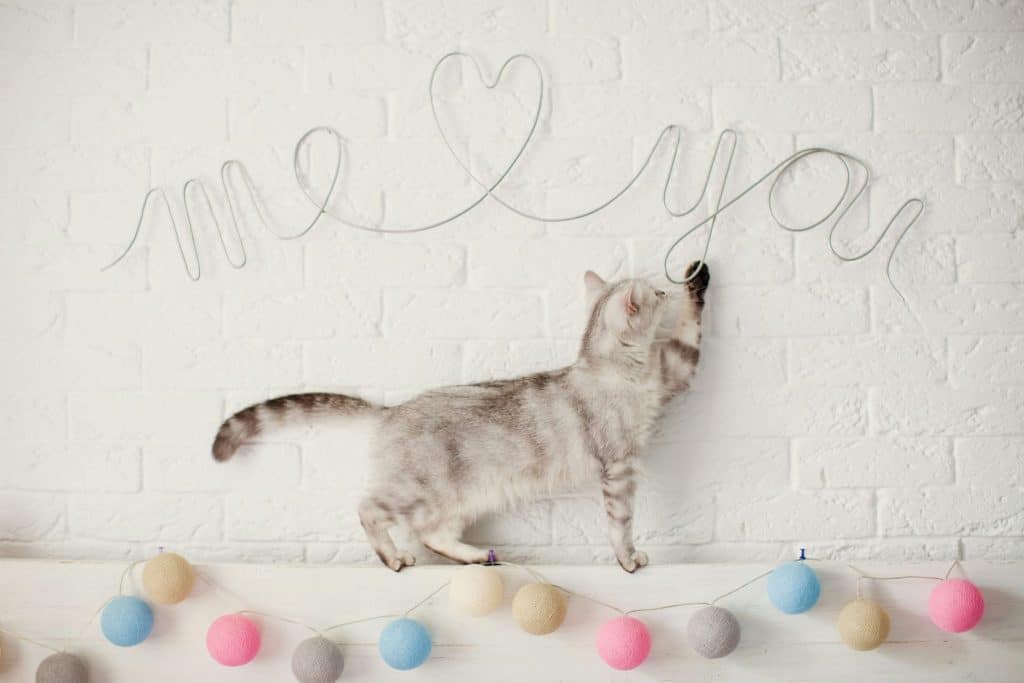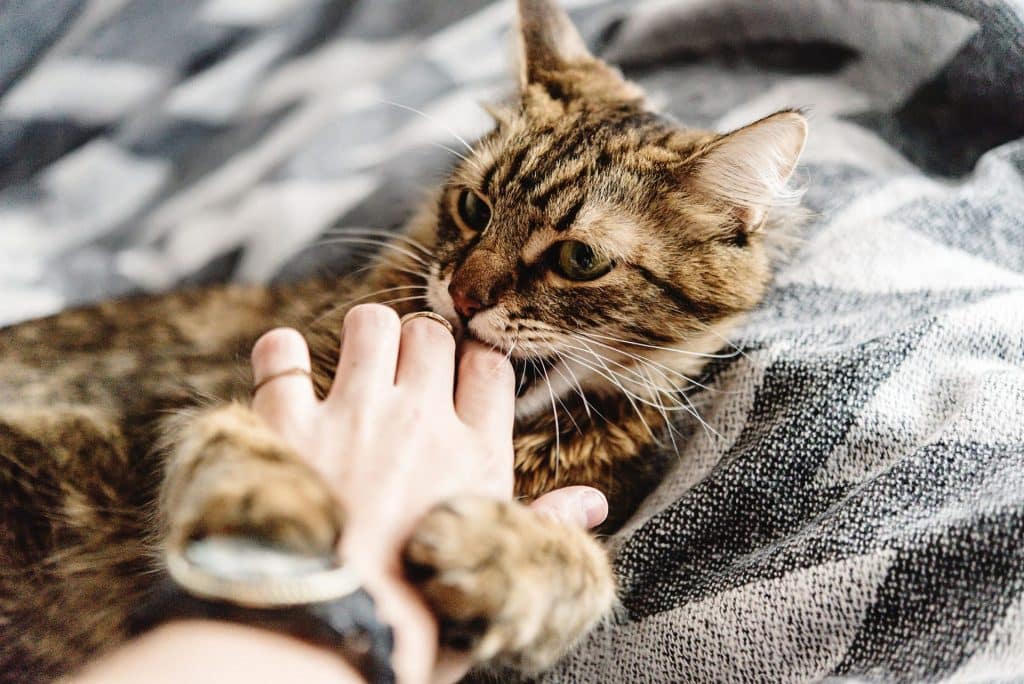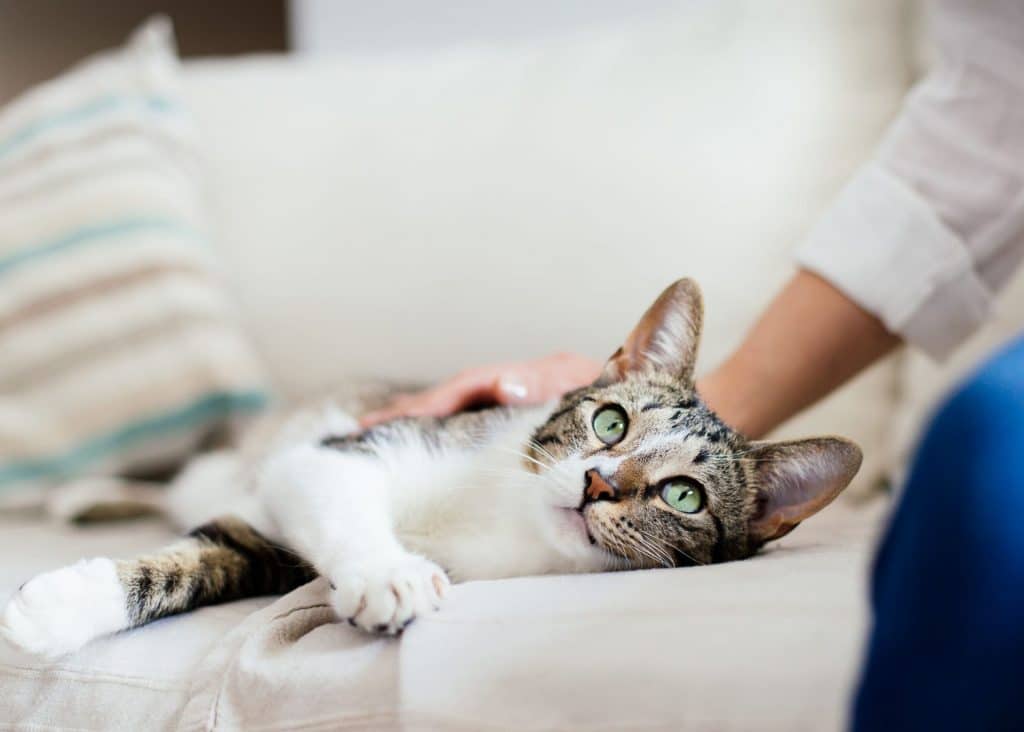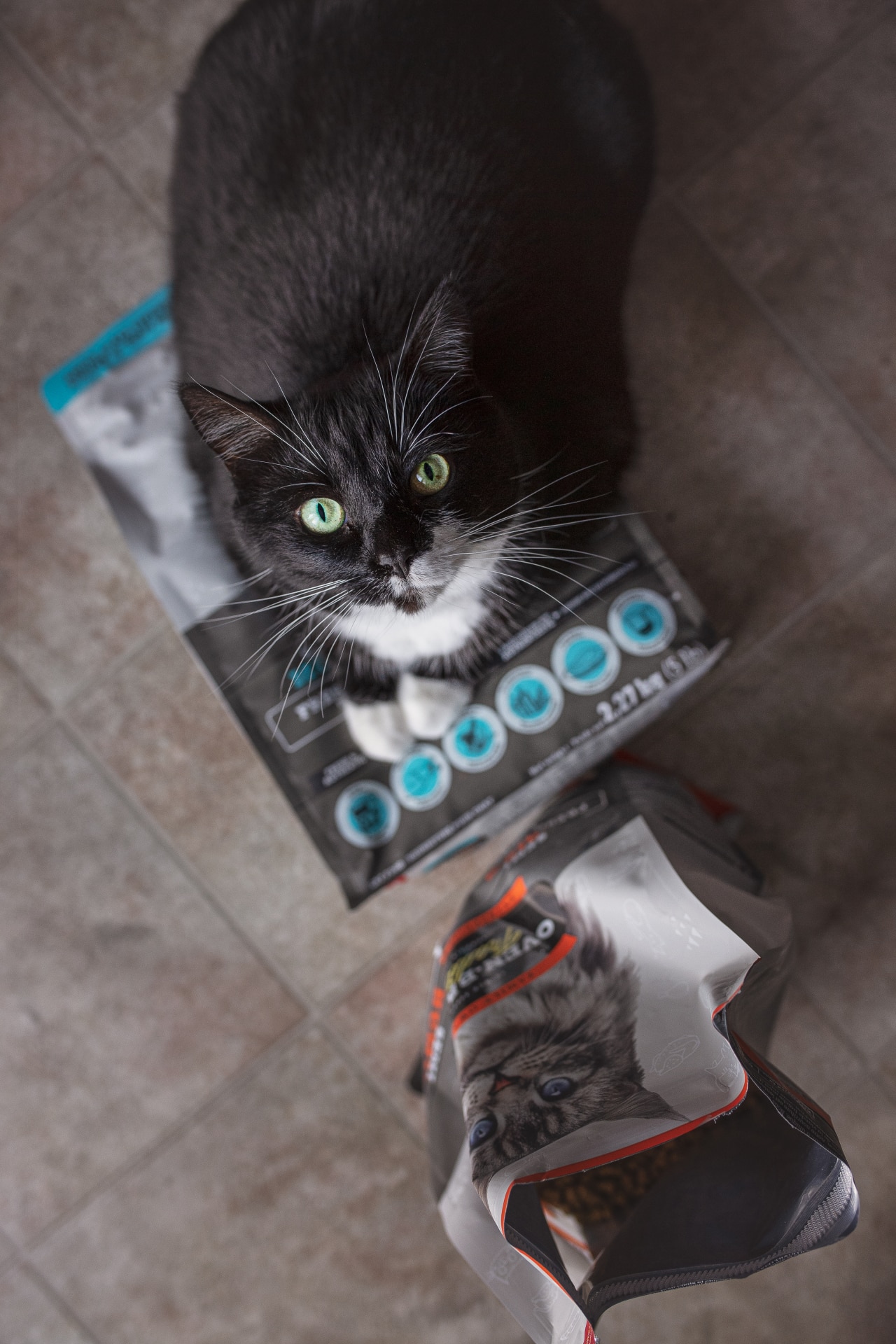Cats’ behaviour can be confusing. They sometimes initiate interactions by rubbing people with their cheeks or hopping onto their laps. Should we respond to these approaches by cuddling the cat? Not always!

Many cats want to be near people, to feel their warmth and presence. On the other hand, they do not always want to be petted. A cat may approach to ask for a play session, food, etc. When it receives petting, instead of what it wanted, the bite may be the result of its frustration.
In the same vein, the cat may want to be petted, but at some point, the physical sensation of being stroked and scratched is no longer pleasant. Instead of hopping down and walking away, it bites. This behavioural disorder must be taken seriously, as a cat bite can easily become infected.

If your cat usually loves petting and its behaviour changes drastically, the first thing to do is to contact your veterinarian. An examination may reveal problems with the skin, joints, ears, teeth, etc. Pain can trigger an aggressive response to being touched in a sensitive area.
Some cats experience stress and fear when petted. Usually they don’t like to be restrained and will see the approach of a hand as a potential aggression. Fearful cats may also bite by redirection when a sudden event frightens them (sudden noises, new odor, etc.).
To avoid this kind of situation, watch closely for subtle signs when your cat is uncomfortable. If you’ve been bitten, step back slowly and give it space. Don’t punish it, as this may make the fear effect worse.

This behaviour disorder can be worked on. However, it is important to determine the cause before taking action. Once the medical possibilities have been verified, we recommend that you contact a feline behaviourist. He can help do gradual desensitization or find a personalized solution to improve your relationship with your feline companion.

